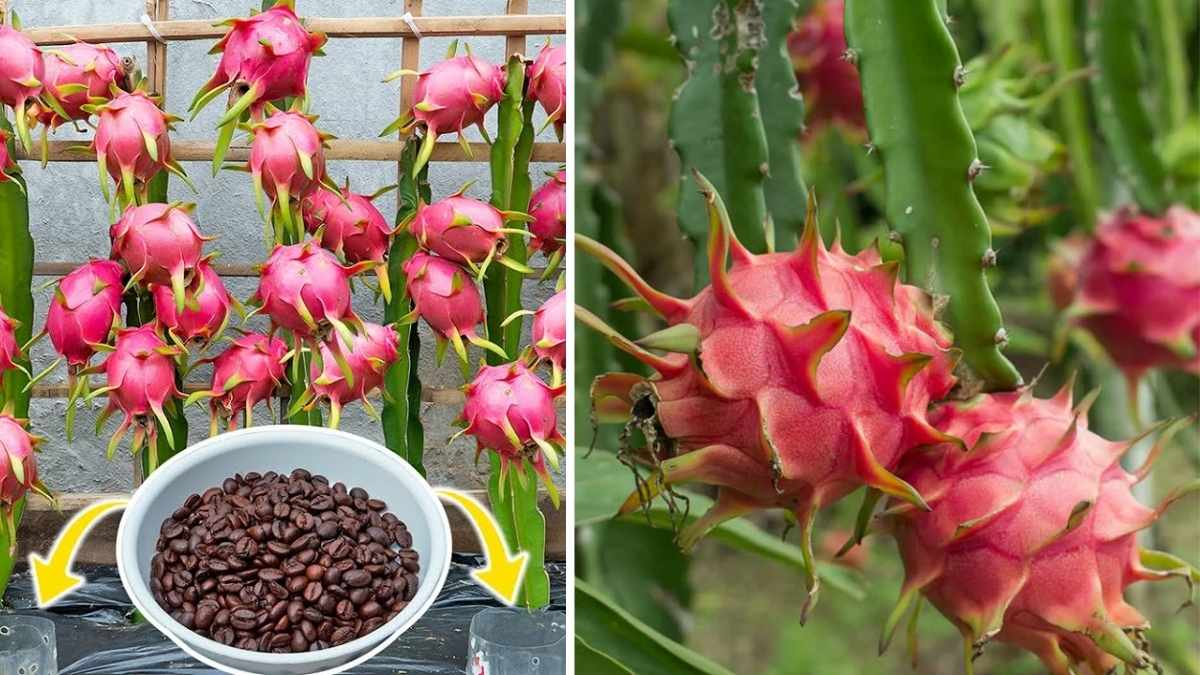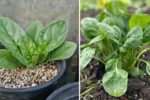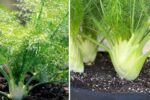Growing red dragon fruit, also known as pitaya, is an exciting and rewarding experience. This exotic cactus plant produces stunning pink-red fruit with a vibrant, sweet taste that resembles a mix of kiwi and pear. The best part is that you can grow it both indoors and outdoors with a little care and patience. Red dragon fruit is not only beautiful but also packed with nutrients like vitamin C, fiber, and antioxidants. Whether you live in a tropical region or a cooler climate, you can enjoy the process of growing this unique plant at home. Here’s a simple guide to help you start growing red dragon fruit easily.
What is the Red Dragon Fruit Plant?
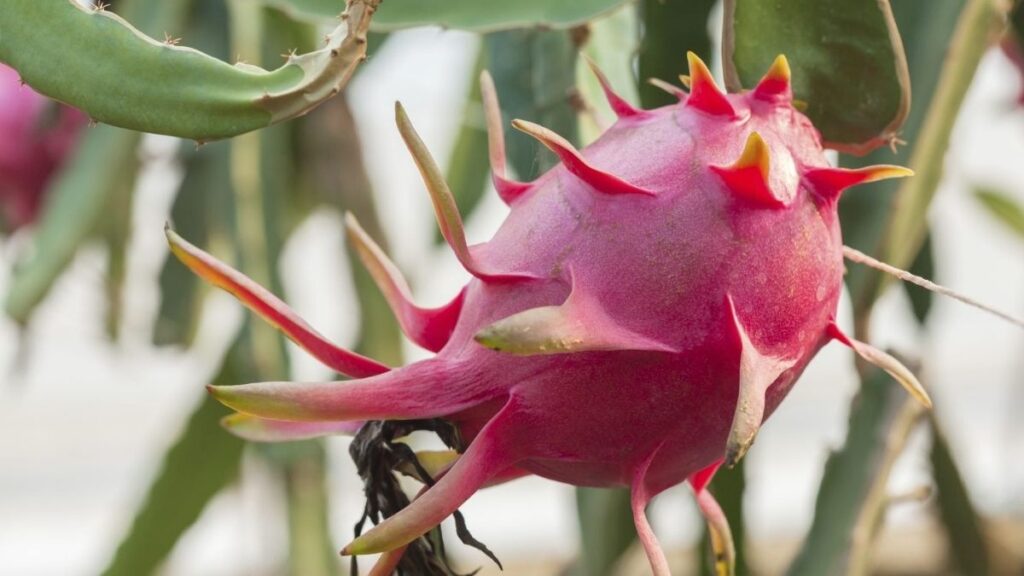
Red dragon fruit belongs to the cactus family, which means it thrives in warm, sunny conditions and requires minimal water compared to other fruit plants. It is a climbing cactus with long, fleshy stems that need support as they grow. The plant can be grown from seeds or cuttings, but cuttings are generally preferred since they grow faster and yield fruit more quickly. Once mature, the plant produces large, white, fragrant flowers that bloom at night and develop into the striking red fruit.
Choosing the Right Location
Before planting, it’s important to choose the right location for your dragon fruit. If you’re growing outdoors, select a sunny spot that receives at least 6 to 8 hours of sunlight each day. The plant loves warmth and performs best in temperatures between 65°F and 85°F. In cooler regions, dragon fruit can be grown indoors in pots near a sunny window or under grow lights. For indoor growing, make sure your plant receives adequate sunlight and warmth. Since it’s a climbing cactus, providing a trellis or support pole will help the stems grow upright and healthy.
Selecting the Soil and Container
Dragon fruit plants prefer well-draining soil since they are prone to root rot if left in waterlogged conditions. Use a sandy cactus mix or create your own by mixing garden soil with sand, compost, and perlite. The soil should be slightly acidic to neutral, with a pH between 6 and 7.
If you’re growing dragon fruit indoors or in containers, choose a large pot with drainage holes at the bottom. The pot should be at least 10 to 15 inches deep to allow room for the roots to spread. Adding small pebbles or gravel at the bottom of the pot will further improve drainage.
Planting Red Dragon Fruit from Cuttings
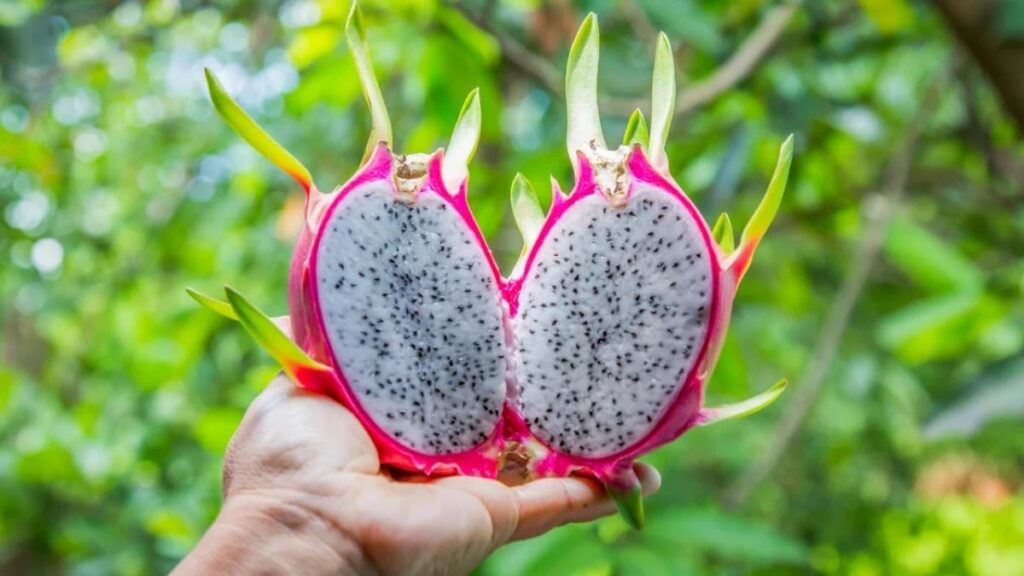
The easiest and fastest way to grow dragon fruit is by using stem cuttings from a healthy, mature plant. Follow these simple steps:
- Cut a healthy stem segment about 8 to 10 inches long from a mature dragon fruit plant.
- Allow the cutting to dry for 4 to 6 days in a shaded place until the cut end forms a callus. This prevents rot when planted.
- Once dried, plant the cutting about 2 inches deep into the soil. Make sure the cut end is buried and the top end is above the soil.
- Water lightly after planting and keep the soil slightly moist until the cutting establishes roots.
Within 2 to 3 weeks, roots will start forming, and new shoots will appear. The plant will gradually begin climbing, so provide a sturdy support structure early on.
Growing Dragon Fruit from Seeds
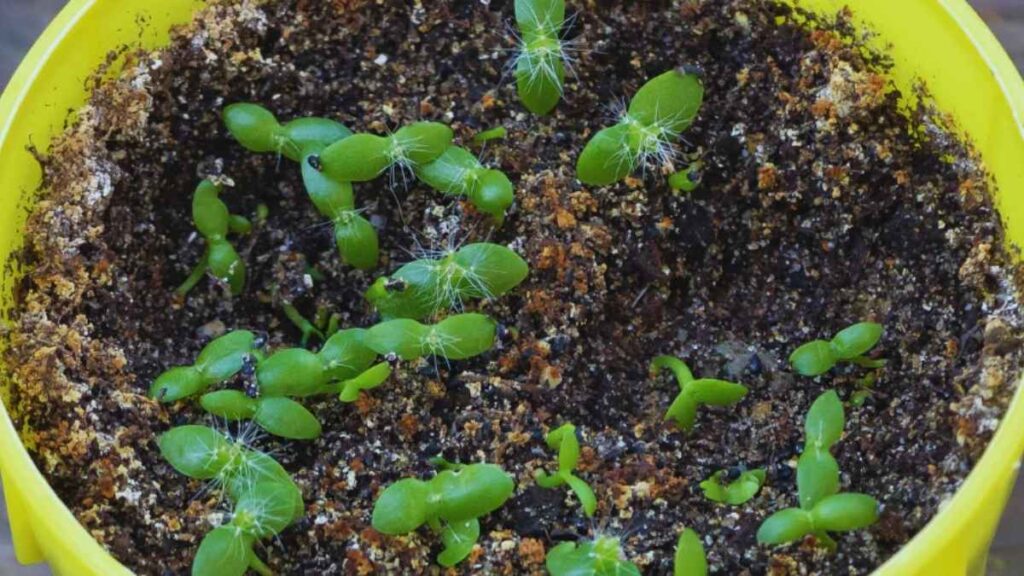
If you prefer to grow from seeds, you can extract them from a fresh dragon fruit. Although this method takes longer to produce fruit, it’s still a fun process. Here’s how to do it:
- Scoop out some seeds from a ripe red dragon fruit.
- Rinse the seeds gently to remove the pulp and let them dry for a day.
- Fill a small container with a cactus mix and sprinkle the seeds on top. Cover them lightly with a thin layer of soil.
- Mist the soil lightly to keep it moist but not soggy.
- Place the container in a warm, bright area with indirect sunlight.
Seedlings usually sprout within 2 to 3 weeks. Once they reach about 6 inches in height, you can transplant them into larger pots or directly into the ground if you’re growing outdoors.
Watering and Fertilizing
Although dragon fruit is a cactus, it still needs regular watering, especially during the growing season. Keep the soil slightly moist but never waterlogged. Overwatering can cause root rot and harm the plant. In dry conditions, water the plant once or twice a week, allowing the soil to dry slightly between waterings.
Fertilizing helps the plant grow strong and produce healthy fruit. Use a balanced fertilizer with equal amounts of nitrogen, phosphorus, and potassium every two months during the growing season. Organic compost or slow-release fertilizer is also a great choice. When the plant starts flowering, you can switch to a fertilizer rich in phosphorus to promote fruit production.
Providing Support for Growth
Dragon fruit plants are climbers and need support to grow upright. Without proper support, the heavy stems may break or sprawl along the ground. You can use a wooden post, trellis, or even a metal pole for the plant to climb. Tie the stems loosely to the support with soft twine to guide their growth. As the plant matures, it will branch out and form a canopy of stems that will eventually bear fruit.
Caring for Indoor Dragon Fruit Plants
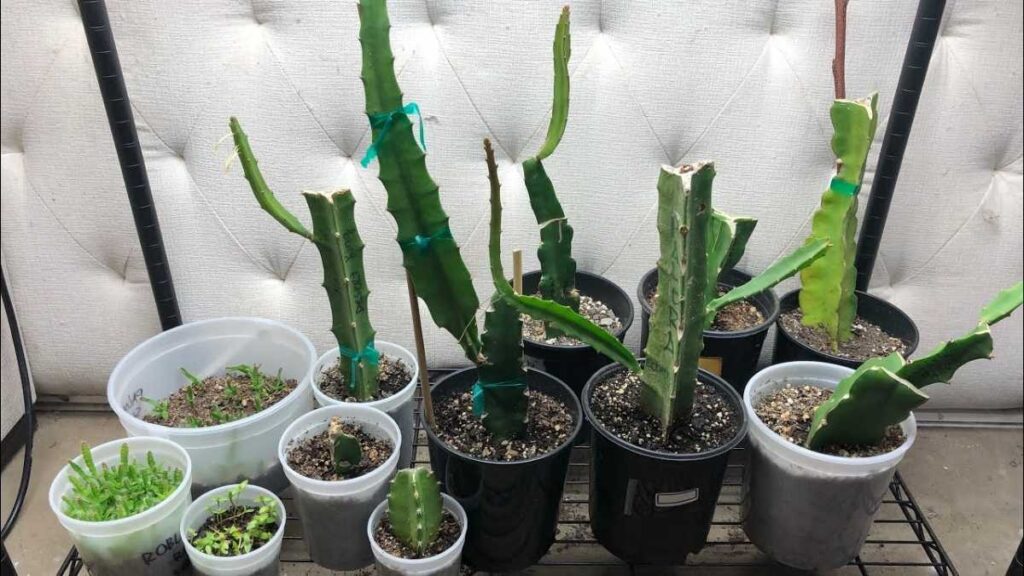
If you’re growing dragon fruit indoors, the key is to mimic its natural environment. Place the plant near a south-facing window or any area that receives plenty of sunlight. If natural light is limited, use LED grow lights for 10 to 12 hours a day. Maintain indoor temperatures between 70°F and 85°F, and avoid placing the plant in drafty or cold areas. Rotate the pot occasionally to ensure even light exposure and growth.
Pollination and Flowering
Dragon fruit plants usually start flowering within 6 to 12 months when grown from cuttings and 2 to 3 years when grown from seeds. The flowers bloom at night and are often pollinated by moths or bats. However, if you’re growing indoors or in an area without natural pollinators, you can hand-pollinate the flowers. Simply use a small brush or cotton swab to transfer pollen from one flower’s stamen to another flower’s stigma. Successful pollination will lead to fruit formation in about 30 to 50 days.
Harvesting the Fruit
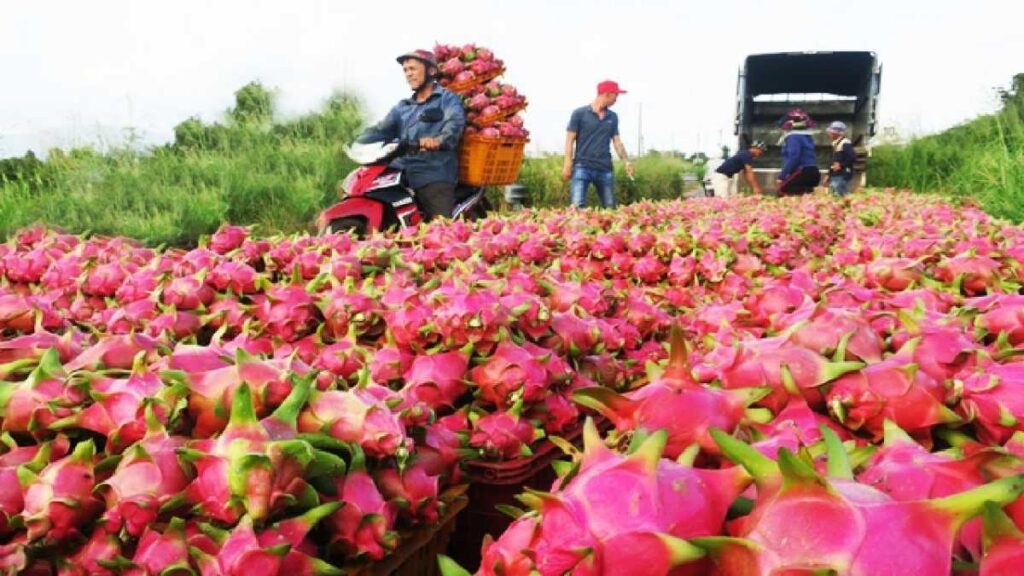
When the fruit turns bright red and the scales on the skin start to spread apart slightly, it’s ready to harvest. The skin should be evenly colored and firm to the touch. Use a sharp knife to cut the fruit from the stem, leaving a small portion of the stem attached. Freshly harvested dragon fruit can be eaten immediately or stored in the refrigerator for several days.
Common Problems and How to Fix Them
While dragon fruit plants are generally hardy, they can still face a few common issues:
- Yellowing stems: This usually indicates overwatering or poor drainage. Allow the soil to dry out before watering again.
- Root rot: Caused by soggy soil; ensure your pot has good drainage and use well-draining soil.
- Pests: Watch for aphids and mealybugs. Use neem oil or organic insecticidal soap to keep pests away.
- Lack of fruiting: If your plant grows well but doesn’t produce fruit, it may need hand pollination or more sunlight.
Conclusion
Growing red dragon fruit indoors or outdoors is easier than it looks, and the results are worth the effort. This beautiful cactus plant not only adds a tropical touch to your home or garden but also rewards you with delicious, nutritious fruit. With the right soil, sunlight, and care, your dragon fruit plant will thrive and bear fruit year after year. Whether you’re a beginner or an experienced gardener, this simple and sustainable method will help you enjoy the beauty and taste of homegrown red dragon fruit with ease.
